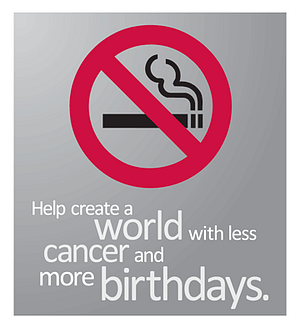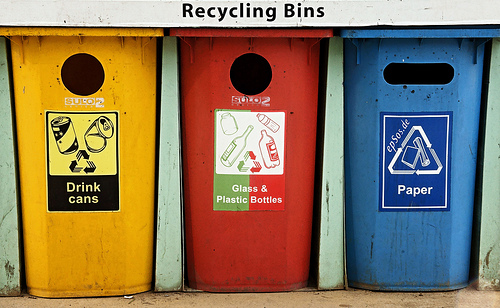11a.
The processes of individual change
Sustainable development will not be reached unless we change, as individuals, organizations, authorities, and societies. In this session we will study and attempt to describe the processes that lead to change and how each one of us as an individual can contribute to change.
On the individual level, change is dependent on our understanding, of attitudes and behaviour. Theories of individual change have been advanced in the fields of psychology and education, in areas of culture, of medicine and health, and in environmental science. Recent research suggests that individual behaviour change is not foremost a question of knowledge and rational choice. It rather depends much on social interactions, lifestyles, norms and values, as well as on support from tailored information, policies, and technologies. In addition, individuals are different. Some people are more likely to change than others, perceive risks differently, and possibilities to change vary for a person during his/her lifetime.
The natural tendency of most individuals is to preserve what they have rather than trying something new, even if it is expected to be better. This resistance to change is explained by status quo is perceived as having a higher value, change itself being uncertain, and that change requires an effort. As a result, most people are habitual. Resistance to change may take many forms, including active or passive, overt or covert, individual or organized, aggressive or timid. As change does not happen, the consequence of not changing is postponed to the future. Sometimes this is serious, as in the economic crisis, but it is equally serious for many environmental issues, including the ongoing global warming.

Change or lack of change is also connected to the perception of risk. This is mostly very irrational and depends on other factors than on carefully calculated data. Risk may be ignored, e.g. when it comes to car driving or bad habits for health. Risks may also be exaggerated. For example, air travel is perceived as dangerous by many, although it is far safer than the car trip to the airport. Risk of climate change has been calculated by the IPCC as very high, about 50% risk of more than 2 degrees global warming (and probably more in most recent estimations). This risk is seldom well understood.
In some situations, a risk may, however, be understood as very real. Thus, when patients who had survived a heart attack were told by their doctors that they had to change behaviour to avoid an almost certain imminent death, there were two kinds of reactions to threat. Some faced the danger, learned much about heart illness and changed behaviour. Another group was unwilling to change, disregarded and played down the danger and did not change. Today, these patients are offered a program to learn a new behaviour. A similar spilt between two types have been seen when it comes to the threat of nuclear war or for that matter climate change: Some face the danger, learn about it and change, but many rather avoid the topic and play down the risks.
Individuals thus differ between themselves. Personality features as well as the way a person perceives his/her situation and the world is important for his/her possibilities to change. People can be categorized in many ways. Michael Thompson, in his cultural theory of risks, differentiates between three categories. The individualists rely on human ingenuity and maintain that there are enough natural resources for all of us. He/She assumes that technological progress will take care of environmental problems. Egalitarians on the contrary assume that Nature is already under severe stress and that environmentally less damaging lifestyles are urgently needed. Hierarchizes are between the two, as they assume that a certain risk to Nature can be accepted if we pursue broader social goals. It is clear that today the world is run by individualists promoting economic growth rather than nature protection.
Which are then the factors, the incentives, which lead to behaviour change? Behaviour change has been studied as part of health research. In this field it is clear that information about a behaviour (smoking, drinking etc) being damaging does not automatically lead to change. Information alone rather seems to have very little effect, even if health is an important value. This is also true for behaviour related to the environment. Values and information are thus by themselves limited as incentives to behaviour change. Nor is regulation by itself an important incentive. For example, the law on obligatory safety belts in cars did not have an immediate effect. Change is more readily accepted if it is voluntary, and it is then also more long-lasting.
 If knowledge does not lead to behaviour change, what then may initiate a change process? New information does lead to change of behaviour if the consequences of the information are immediate, for example “do not feed the wolf, he will bite you”. But information on environmental matters is seldom related to immediate consequences. The consequences are typically far away, often both in time and space. One may instead assume that information may lead to increased awareness of an issue, which is followed by behaviour change. But at least in the field of environment, research suggests that it is rather the other way around. It is new behaviour, which leads to new knowledge, which, if deepened, is followed by a change in attitude.
If knowledge does not lead to behaviour change, what then may initiate a change process? New information does lead to change of behaviour if the consequences of the information are immediate, for example “do not feed the wolf, he will bite you”. But information on environmental matters is seldom related to immediate consequences. The consequences are typically far away, often both in time and space. One may instead assume that information may lead to increased awareness of an issue, which is followed by behaviour change. But at least in the field of environment, research suggests that it is rather the other way around. It is new behaviour, which leads to new knowledge, which, if deepened, is followed by a change in attitude.
Thus, the typical change process starts in the practical situation. The concrete situation, the antecedents, is important for behavioural change. An antecedent is what is there before the effort to induce a change. The practical conditions should be such that the new behaviour is easily accessible. It is easier to buy eco-labelled products if you see them on the shelf, and it is easier to stop smoking if there are no cigarettes around. The environmentally adverse behaviour should be difficult to carry out, while the good behaviour should be easy.
Also, important are the consequences of a behaviour change. Since the effect on the environment itself is seldom immediate, one needs to construct “artificial” consequences to promote behavioural changes. These have mostly been economic, e.g. decreasing energy costs when saving energy, or smaller fees for waste management if the waste is sorted. Economic incentives are extremely important. It is crucial that environmentally good behaviours should be less expensive than environmentally bad. This is mostly done by taxations. Thus, a high tax on carbon dioxide emissions is a very efficient way to achieve a change to non-fossil fuels.
 A British 2008 governmental report on policy frameworks for promoting environmentally more sustainable patterns of consumption and production concluded that a most important condition is proper social norms. A first condition for municipalities was structures needed for proper environmental management (the antecedents!). E.g. provision of kerbside recycling will raise recycling rates without any underlying shift in culture or attitudes. But the second most important determinant of whether someone recycles is whether his/her neighbour does – which can be regarded as a proxy for the extent to which the behaviour has become a social norm.
A British 2008 governmental report on policy frameworks for promoting environmentally more sustainable patterns of consumption and production concluded that a most important condition is proper social norms. A first condition for municipalities was structures needed for proper environmental management (the antecedents!). E.g. provision of kerbside recycling will raise recycling rates without any underlying shift in culture or attitudes. But the second most important determinant of whether someone recycles is whether his/her neighbour does – which can be regarded as a proxy for the extent to which the behaviour has become a social norm.
In summary, to achieve change in behaviour one first needs to arrange the practical situation, so the new behaviour is easy to carry out. Secondly the new behaviour should at best be profitable, that is economically better than the old one, e.g. by new charges, taxes, or subsidies. If enough members of the society adopt the new behaviour, it becomes a social norm and is then further accepted and strengthened. This may lead to knowledge on the reason for the new behaviour and a new awareness in society.
Materials for session 11a
Basic level
- Study behaviour change theories in the Environmental Science, chapter 21: Behaviour and the Environment, especially pp 651–658.
- Read pages 47–48: Individualists, Egalitarians, Hierarchists – Three Ways to Perceive the World in Environmental Management, book 3, chapter 2: Resource Flow and Product Design.
Medium level (widening)
- Study pages 7–17 in Achieving Culture Change: A Policy Framework (UK government report, 2008).
Advanced level (deepening)
- Study Behaviour Change – A Summary of Four Major Theories as used in HIV/AIDS prevention.
- A longer report of behaviour change is the Government Social Research (GSR) report Behaviour Change Knowledge Review Reference Report: An overview of behaviour change models and their uses by Andrew Darnton, Centre for Sustainable Development, University of Westminster 2008. Read especially “2.3 The role of information and the value action gap” pp 10–15.
References
Darnton, A. 2008. Reference Report: An overview of behaviour change models and their uses. Centre for Sustainable Development, University of Westminster. UK:
Family Health International (FHI). 2002. Behavior Change – A Summary of Four Major Theories. Arlington, VA. USA.
Rydén, L., Migula, P. and M. Andersson (eds). 2003. Environmental Science – understanding, protecting and managing the environment in the Baltic Sea region. Baltic University Press. Uppsala.
Zbicinski, I., Stavenuiter, J., Kozlowska. B. and H.P.M. van de Coervering. 2006. Product Design and Life Cycle Assessment. Book 3 in a series in Environmental Management. Baltic University Press. Uppsala.
BUP Sustainable Development Course
